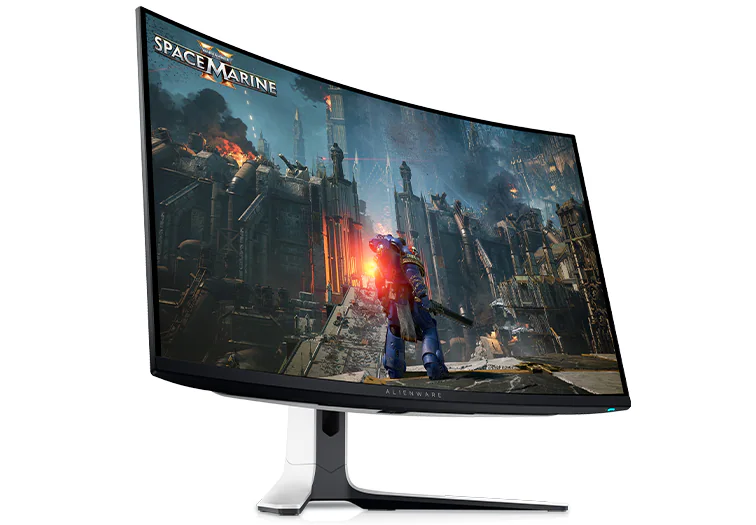For serious gamers in Kenya, a high-performance monitor isn’t just an accessory; it’s a competitive edge and a gateway to truly immersive worlds. The right gaming monitor can transform your experience, making gameplay smoother, more responsive, and visually stunning. But with so many technical terms, choosing one can be daunting.
At Electronics Place, we’re here to help you decode the jargon and find the perfect gaming monitor to elevate your play.
1. Refresh Rate (Hz): The Smoothness Factor
What it is: Refresh rate refers to how many times per second the monitor can refresh its image. It’s measured in Hertz (Hz). A higher refresh rate means more frames are displayed per second, resulting in significantly smoother motion.
Why it matters for gaming: In fast-paced games (like first-person shooters or racing games), a higher refresh rate allows you to see enemy movements or environmental changes more quickly and clearly. This can give you a crucial advantage in competitive play.
Recommendations:
- 60Hz – 75Hz: Standard for general use and casual gaming.
- 120Hz – 144Hz: The sweet spot for most serious gamers, offering a noticeable improvement in smoothness without an exorbitant price tag.
- 240Hz+: For competitive esports players seeking every possible advantage. Requires a very powerful graphics card to consistently deliver such high frame rates.
2. Response Time (ms): Eliminating Ghosting
What it is: Response time measures how quickly individual pixels on the screen can change from one color to another (typically grey-to-grey, or GtG). It’s measured in milliseconds (ms).
Why it matters for gaming: A low response time reduces “ghosting” or “motion blur,” where fast-moving objects leave trails on the screen. This ensures crisp, clear visuals even during chaotic action.
Recommendations:
- 5ms: Acceptable for casual gaming.
- 1ms or less: Ideal for competitive gaming to minimize any noticeable blur. Many gaming monitors now boast 1ms GtG or even lower (e.g., 0.03ms for OLED panels).
3. Adaptive Sync Technology: G-Sync vs. FreeSync
What it is: Screen tearing (when the top and bottom halves of the screen show different frames) and stuttering (choppy motion) occur when your graphics card’s frame rate doesn’t synchronize with your monitor’s refresh rate. Adaptive Sync technologies solve this.
-
- NVIDIA G-Sync: A proprietary technology requiring a special hardware module in the monitor. Generally offers a wider variable refresh rate range and superior performance. Works with NVIDIA graphics cards.
- AMD FreeSync: An open-standard technology that’s more widely adopted and generally more affordable. Works with AMD graphics cards and is often “G-Sync Compatible” for NVIDIA cards as well, though performance may vary.
Why it matters for gaming: Both technologies synchronize the monitor’s refresh rate with your GPU’s frame rate, eliminating tearing and stuttering for incredibly smooth, fluid gameplay.
Recommendation: Match the technology to your graphics card (NVIDIA for G-Sync, AMD for FreeSync). Most modern monitors support some form of adaptive sync.
4. Panel Type: Visuals vs. Speed
The type of display panel affects image quality, viewing angles, and response time:
TN (Twisted Nematic):
- Pros: Fastest response times (often 1ms), most affordable.
- Cons: Poorest color accuracy, limited viewing angles (colors can look washed out from the side).
- Best for: Competitive esports players where every millisecond counts, and budget is a concern.
IPS (In-Plane Switching):
- Pros: Excellent color accuracy, wide viewing angles, good for vibrant visuals. Response times have improved significantly, with many offering 1ms GtG.
- Cons: Historically slower response times than TN (though narrowing), generally higher cost, sometimes weaker contrast.
- Best for: Most gamers who want a balance of speed and stunning visuals, especially for story-driven games or titles with rich graphics. Also good for content creation.
VA (Vertical Alignment):
- Pros: Excellent contrast ratios (deep blacks), often used in curved monitors for immersive experiences, decent color reproduction.
- Cons: Slower response times compared to TN and IPS, which can lead to more noticeable ghosting in very fast-paced games.
- Best for: Cinematic gaming, RPGs, and single-player games where immersion and contrast are key.
OLED (Organic Light Emitting Diode):
- Pros: The “holy grail” of display technology with infinite contrast (true blacks), perfect viewing angles, and incredibly fast pixel response times (often 0.03ms GtG).
- Cons: Most expensive, potential for burn-in with static images (though significantly mitigated in modern OLEDs).
- Best for: Enthusiasts who want the absolute best visual experience and can afford the premium price.
5. Resolution & Size: Clarity and Immersion
Resolution:
- 1080p (Full HD): Easiest for graphics cards to run at high frame rates, good for smaller monitors (up to 27 inches).
- 1440p (QHD): A great sweet spot, offering sharper visuals than 1080p without being as demanding as 4K. Ideal for 27-inch to 32-inch monitors.
- 4K (UHD): Provides incredible detail but requires a very powerful graphics card to maintain high frame rates. Best for larger monitors (32 inches and above).
Size:
- 24-27 inches: Popular for competitive gaming, easy to see the whole screen.
- 32 inches+ or Ultrawide: Offers greater immersion for single-player games, simulations, or multitasking.
Find Your Ultimate Gaming Monitor at Electronics Place
Choosing the right gaming monitor is about balancing your budget with your gaming style and the power of your PC. At Electronics Place, we offer a diverse range of gaming monitors from top brands like Samsung, LG, MSI, and more, featuring all the essential specs to meet your demands.
Our expert team is ready to help you find the perfect monitor to unleash your gaming potential.
Level up your gameplay today. Explore our selection of gaming monitors at Electronics Place (electronicsplace.co.ke). We deliver cutting-edge gaming gear to all cities in Kenya.


 No products in the cart.
No products in the cart.